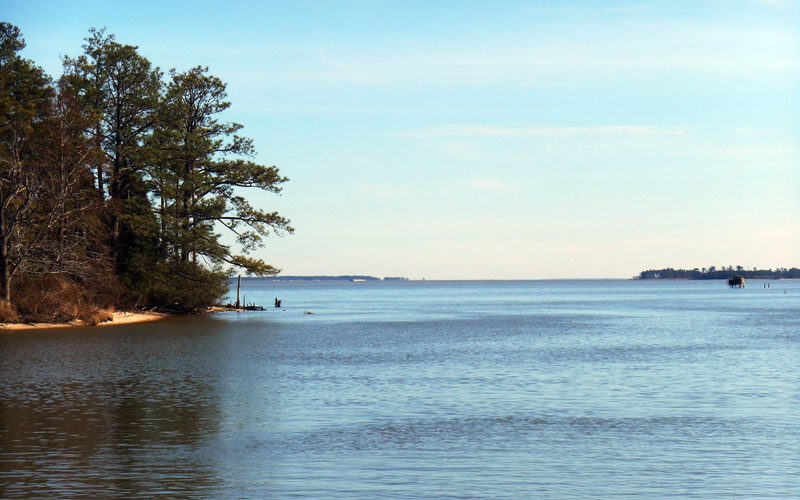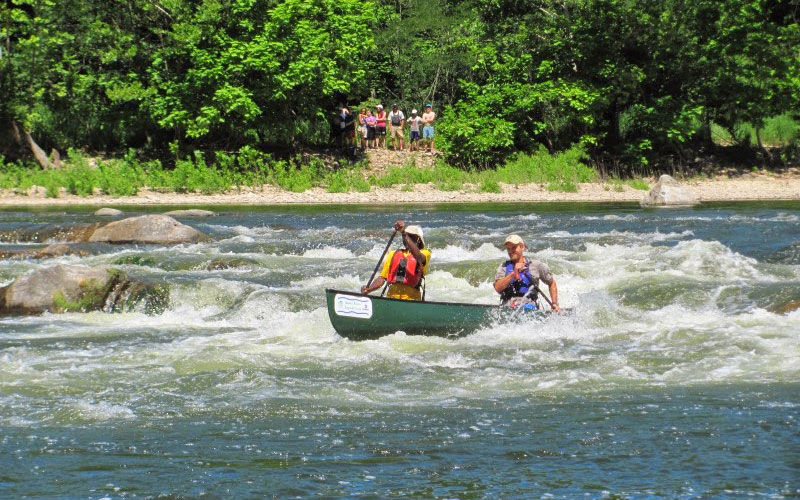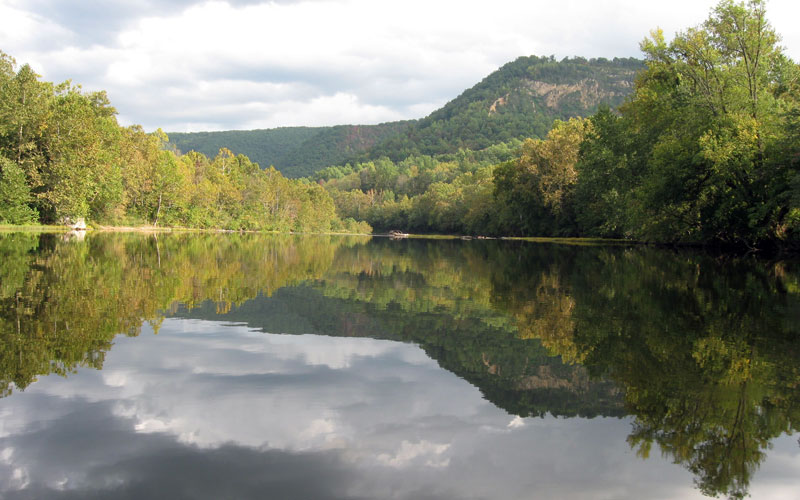About the James River
The James River is Virginia’s largest river, flowing across the entire state. It begins in the mountains at the confluence of the Cowpasture and Jackson Rivers in Botetourt County and ends at the Chesapeake Bay in Hampton Roads. The James is Virginia’s largest tributary to the Chesapeake Bay. It is 340 miles long and is fed by 25,000 miles of tributaries, which makes it one of the longest rivers in America that begins and ends in the same state.
The James River watershed encompasses approximately 10,000 square miles, which makes up almost 25% of the state. It is home to one-third of all Virginians who live in its 39 counties and 19 cities and towns, and touches the lives of more Virginians than any other feature in the landscape. Residents of the watershed rely on the James for drinking water, commerce and recreation.
The watershed is comprised of three sections. The Upper James Watershed begins in Alleghany County and travels through the Allegheny and Blue Ridge Mountains until Lynchburg. The Middle James runs from Lynchburg to the Fall Line in Richmond, while the Lower James stretches from the fall line in Richmond to the Chesapeake Bay.
Fast Facts
• Approximately 3 million Virginians live in the 10,000 square mile James River watershed
• Largest tributaries: Appomattox River, Chickahominy River, Cowpasture River, Hardware River, Jackson River, Maury River, Rivanna River, Tye River.
• The James River was home to Virginia’s first colonial capital at Williamsburg and is home of the modern capitol at Richmond.
• The largest roosting area on the eastern seaboard for Bald eagles is the James River.
• The Falls of the James at Richmond drop 105 feet over seven miles. This offers a Class I to Class V rapids and represents the only white water that cuts through the heart of an urban area.
• Some of Virginia’s oldest plantations overlook the James including: Shirley, Berkeley, Westover, Evelynton, Edgewood, Piney Grove, Carter’s Grove, and Sherwood Forest.
• The James is home to one of the largest and busiest harbors in the world at Norfolk
Volunteer
Ready to give back to the James? Whether it’s getting your hands dirty with one of our Watershed Restoration projects, acting as a voice for the river through our Advocacy efforts or helping out with office tasks, there is a job for everyone to play a part in making a cleaner James River.
If your community is in the James River watershed, you can give back to its health.
Whether you appreciate access to clean water or just feel passionate about protecting our environment, there are things you can do that don’t involve getting wet!
Use your time on the river to give back to its health.
We are a voice for the James, identifying the risks facing our river and sharing solutions that will produce results for clean water and healthy waterways. With so much ground to cover, we need your help.
If you live or work in the James River watershed, you can give back to its health.
We have great opportunities if you prefer working on land – or even your own backyard.
Use your time on the river to give back to its health.
We also have opportunities for individuals who enjoy time on the James. If you routinely spend time fishing, paddling, or boating the James or one of its tributaries, these are great ways to get involved!
The James River Association
The mission of the James River Association is to be a guardian of the James River. We provide a voice for the river and take action to promote conservation and responsible stewardship of its natural resources.
The James River Association has set two Strategic Goals for our efforts to achieve a fully healthy James River.
- Keeping Virginia moving forward to fully implement the cleanup plans for the James River under the Chesapeake Bay Cleanup effort.
- Helping communities realize the benefits from a healthy James River and support protecting it.
JRA monitors the river, responds to problems, seeks policy changes, and implements on-the-ground projects to restore the river’s health. We protect through our Watershed Restoration, James Riverkeeper, and River Advocacy programs.
JRA helps communities benefit from the river by increasing river access, supporting river-related events, and implementing volunteer projects. We connect through our Environmental Education and Community Conservation programs.




